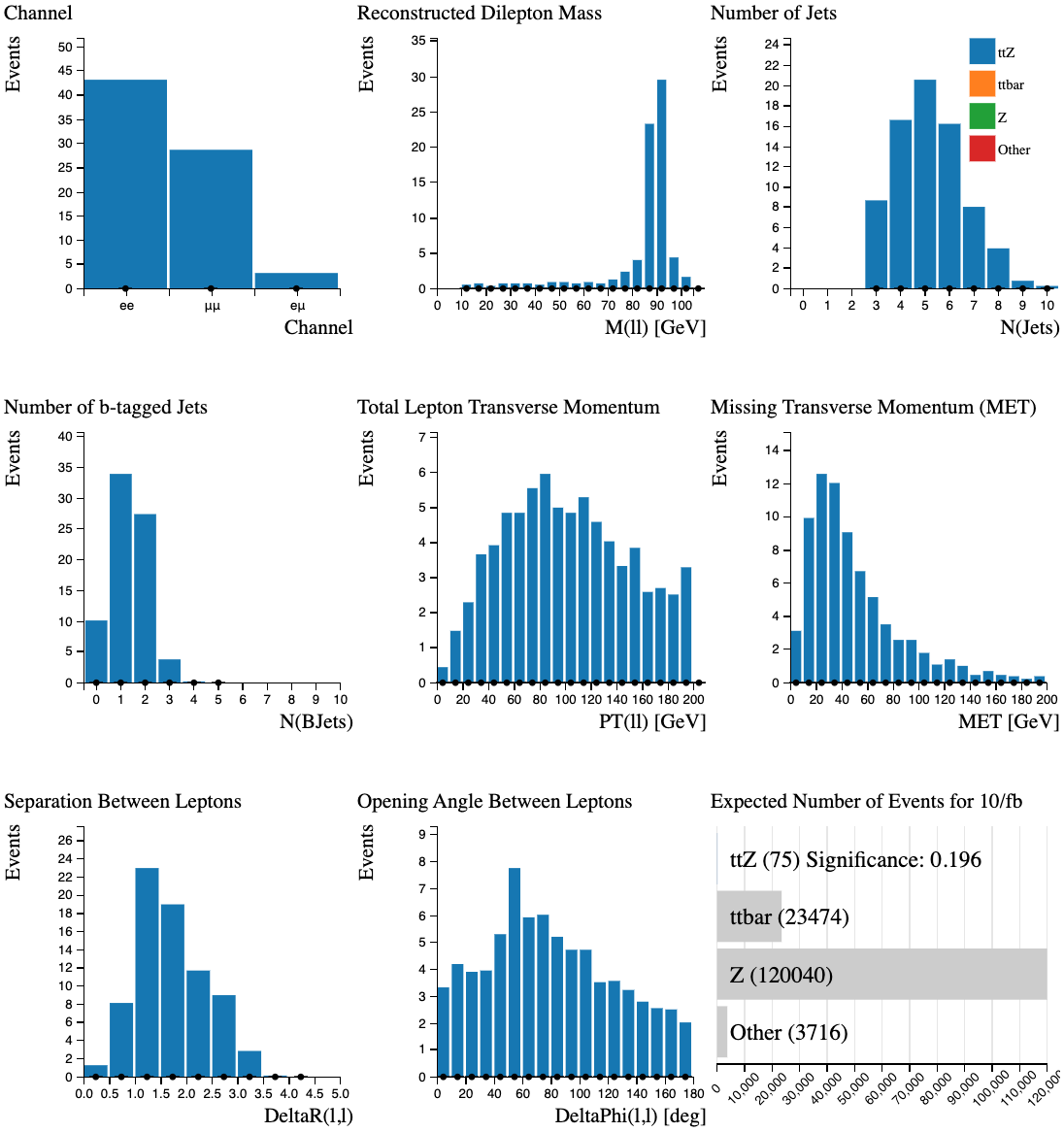How to Separate Signals: ttZ
Using the Histogram Analyser we can look at each sample separately and understand a little more about their characteristics.
This will help us separate our signal from the background later.
Select the sample by clicking on the bar in the Expected Number of Events histogram.
The rest of the histograms now just display the characteristics of your chosen sample.
( = electron, muon)
Our signal is the which decays into two bosons, two b-quarks and two leptons. The bosons subsequently decay into quarks.

Let's look at the individual histograms:
- The events occur in the di-electron and di-muon channels.
- The reconstructed mass from the two leptons peaks at 90 GeV.
- The majority of events contain 5 or more jets.
- The majority of events contain 1 or 2 b-tagged jets.
- The total lepton transverse momentum peaks around 80 GeV.
- The total missing transverse momentum tends to be small.
- The separation between leptons peaks around 1-1.5.
- The opening angle of the leptons from top quark production is fairly evenly distributed over the whole range, tending to slightly smaller values.
top quark pair production ()
The top quark is the heaviest subatomic particle ever observed, with a mass that is about as heavy as an entire atom of gold. Top quarks are also among the most fleeting of particles, with a lifetime of about a trillionth of a trillionth of a second.
Due to its high mass and short lifetime, the top quark provides a unique environment to study a bare quark.

Looking at the individual histograms:
- The events occur in all three channels.
- The reconstructed mass from the two leptons is much smoother than the reconstructed mass from the two leptons in .
- The majority of events contain 3 jets.
- Most events contain 1 or 2 b-tagged jets.
- The total lepton transverse momentum peaks around 60-70 GeV.
- Missing transverse momentum is due to the neutrinos in the final state.
- The separation between leptons peaks around 1.5-2.
- The opening angle of the leptons from top quark production is fairly evenly distributed over the whole range, tending to slightly smaller values.
Therefore demanding
- events in the and channels,
- reconstructed mass from the two leptons around 90 GeV,
- 6 or more jets and
- a low missing transverse momentum
will reduce the top quark contribution.

Looking at the individual histograms:
- The events occur in the di-electron and di-muon channels.
- The reconstructed mass from the two leptons peaks at around 90 GeV.
- The majority of events contain 3 jets.
- Most events don't have b-tagged jets.
- The total lepton transverse momentum peaks around 30-40 GeV.
- The total missing transverse momentum tends to be small.
- The separation between leptons is rather flat between 1.5 an 3.
- The opening angle of the leptons tends to be large (back-to-back)
decays often contain 6 jets, whereas boson decays tend to contain fewer jets. Requiring at least 6 jets is an important cut to remove boson background from our signal.